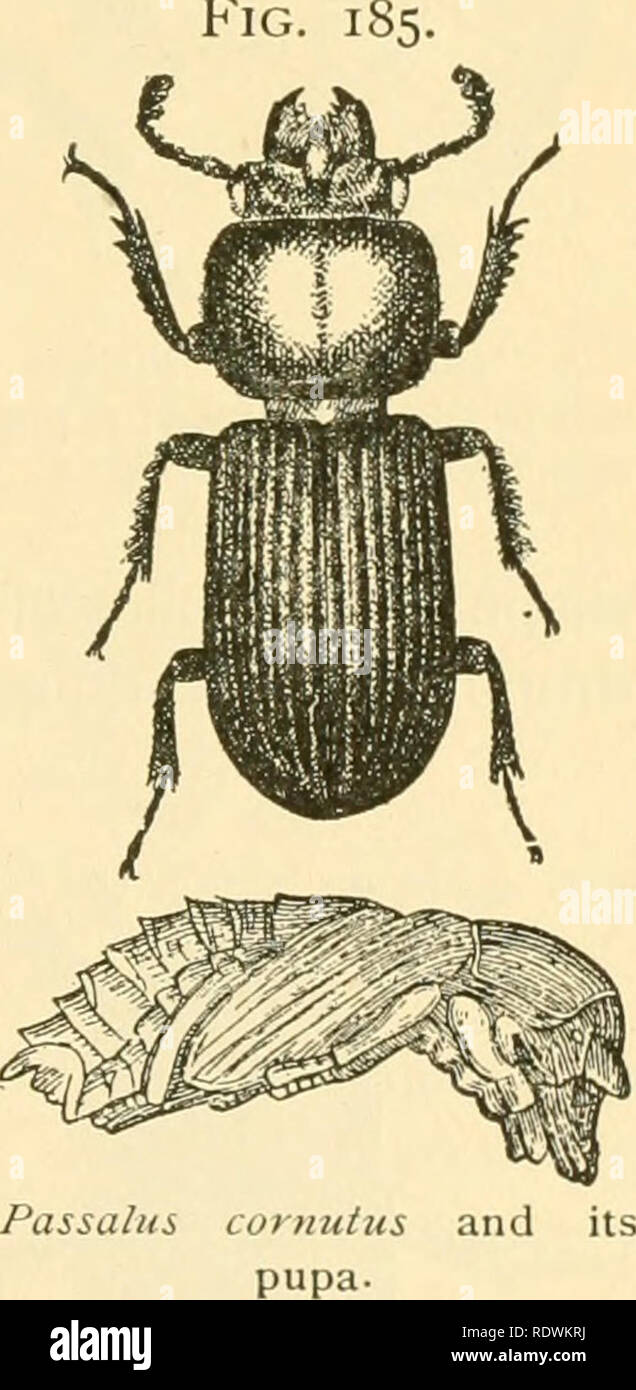. Economic entomology for the farmer and fruit-grower. Beneficial insects. THE INSECT WORLD. 197 Fig popular interest. They differ from the Scarab(sidce in that the leaves of the club are separated and cannot be made to form a solid club or mass. Our most common "stag-beetle" is the Lucamis dama, in which the mandibles of the male are much enlarged and sickle- shaped ; whence the common term " pinching-bug." It occurs throughout the Middle and Central States, becoming more rare to the North and losing interest in the South in favor of its more prominent relative, the L. ela

Image details
Contributor:
The Book Worm / Alamy Stock PhotoImage ID:
RDWKRJFile size:
7.1 MB (276.2 KB Compressed download)Releases:
Model - no | Property - noDo I need a release?Dimensions:
1106 x 2259 px | 18.7 x 38.3 cm | 7.4 x 15.1 inches | 150dpiMore information:
This image is a public domain image, which means either that copyright has expired in the image or the copyright holder has waived their copyright. Alamy charges you a fee for access to the high resolution copy of the image.
This image could have imperfections as it’s either historical or reportage.
. Economic entomology for the farmer and fruit-grower. Beneficial insects. THE INSECT WORLD. 197 Fig popular interest. They differ from the Scarab(sidce in that the leaves of the club are separated and cannot be made to form a solid club or mass. Our most common "stag-beetle" is the Lucamis dama, in which the mandibles of the male are much enlarged and sickle- shaped ; whence the common term " pinching-bug." It occurs throughout the Middle and Central States, becoming more rare to the North and losing interest in the South in favor of its more prominent relative, the L. elaphus, which in the male has man- dibles almost as long as itself, and branched like antlers, yielding in this respect, however, to its European congener, the L. cervus, or original "stag-beetle." Quite a different-looking creature is the Passahis cormdiis, perhaps the most common of all the members of this family, though not always readily found. It is coal-black, shining, with a large square thorax and a small head armed with a short curved horn. All these species and all the larvae of this family feed in decaying wood, and preferably in stumps or in roots. Thus their function is rather as scavengers, and never as destroyers of vegetable life. The larva of the Passaliis cornutiis is interesting, because it has four legs only, one pair being entirely aborted. In the family ScarabcBidce the leaves of the antennal club are always close together when at rest, but can be spread out fan-like at the will of the insect, exposing the numerous sensory pittings with which they are closely set. The legs are always fitted for digging. At the beginning we meet a series of species that are scavengers, living on decaying or excrementitious matter. Some of them are large and have the curious habit of making balls of dung, in each of which an o.^^ is laid. The balls are then buried beneath the surface, and each furnishes sufficient food to bring one larva to maturity. When the ball is